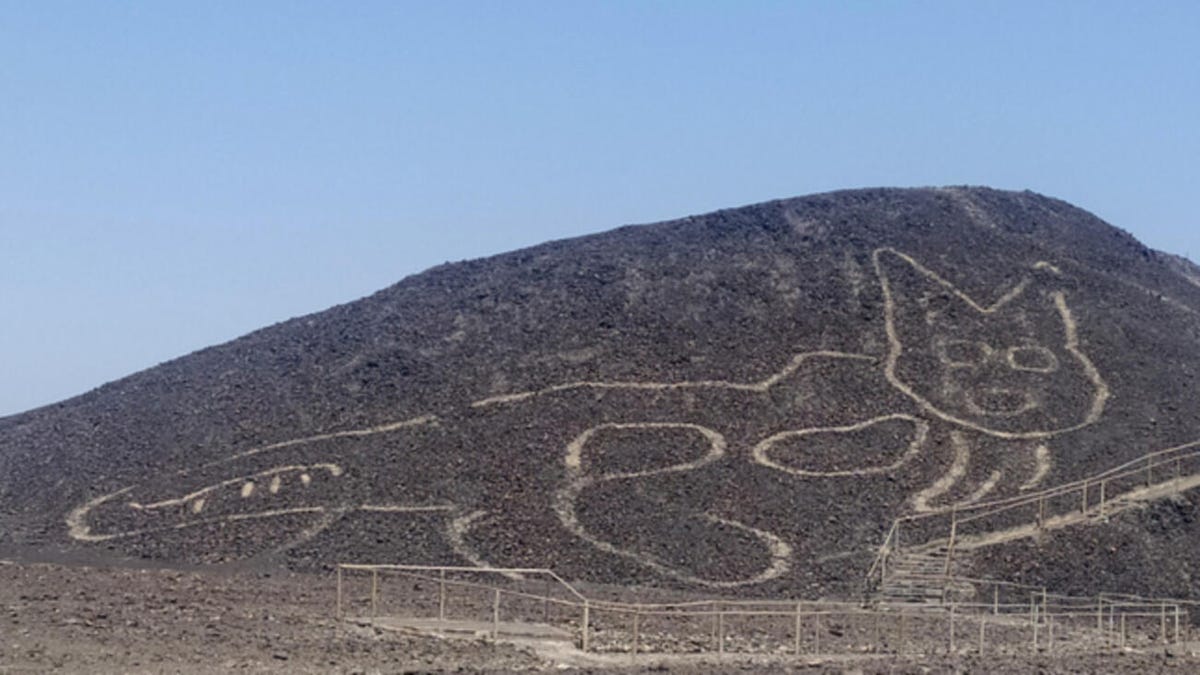Archaeologists discover massive 2,000-year-old cat doodle carving in Peru
Pointy-eared kitty sprawls for 121 feet across a hillside in the Nazca desert.

The feline figure dates to back to between 100 B.C. and 200 B.C., and is 121 feet (37 meters) long.
What's new, pussycat? Not this cat, which is 2,000 years old. Archeologists in Peru have discovered a cartoony figure of a sprawling cat carved into a hill in the Nazca desert, the country's Ministry of Culture announced.
The cat shape was discovered during remodeling work being done in the U.N. World Heritage site Nazca Lines, located almost 250 miles from Lima. It features round eyes and mouth, paws, a long body with tail and distinctive kitty-cat pointy ears. Watch out, giant Peruvian mice -- this cat is 121 feet (37 meters) long.
The design is what's known as a "geoglyph," or a large design formed by landscape elements, and the Nazca Lines are perhaps the most famous. Other animals and shapes were already known to be part of the site, but this sprawling kitty is a new find.
The cat figure was hard to see at first, and was about to disappear, due to its location on a fairly steep slope and the effects of natural erosion, the ministry of culture said. It's since been cleaned and experts dated the discovery to the late Paracas period, around 100 B.C. to 200 B.C.
"Representations of felines of this type are frequent in the iconography of ceramics and textiles of the Paracas society," the ministry statement said last week.

